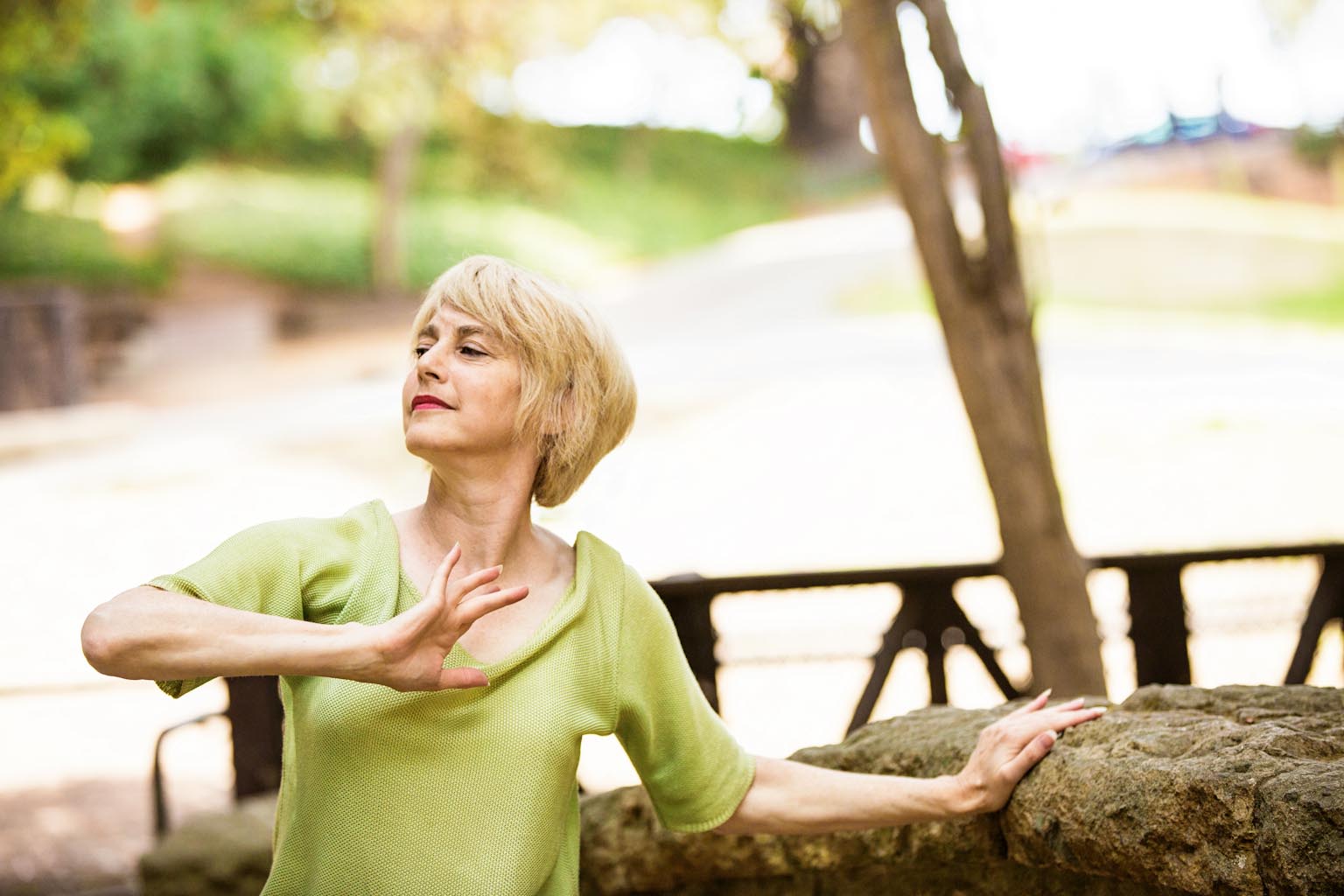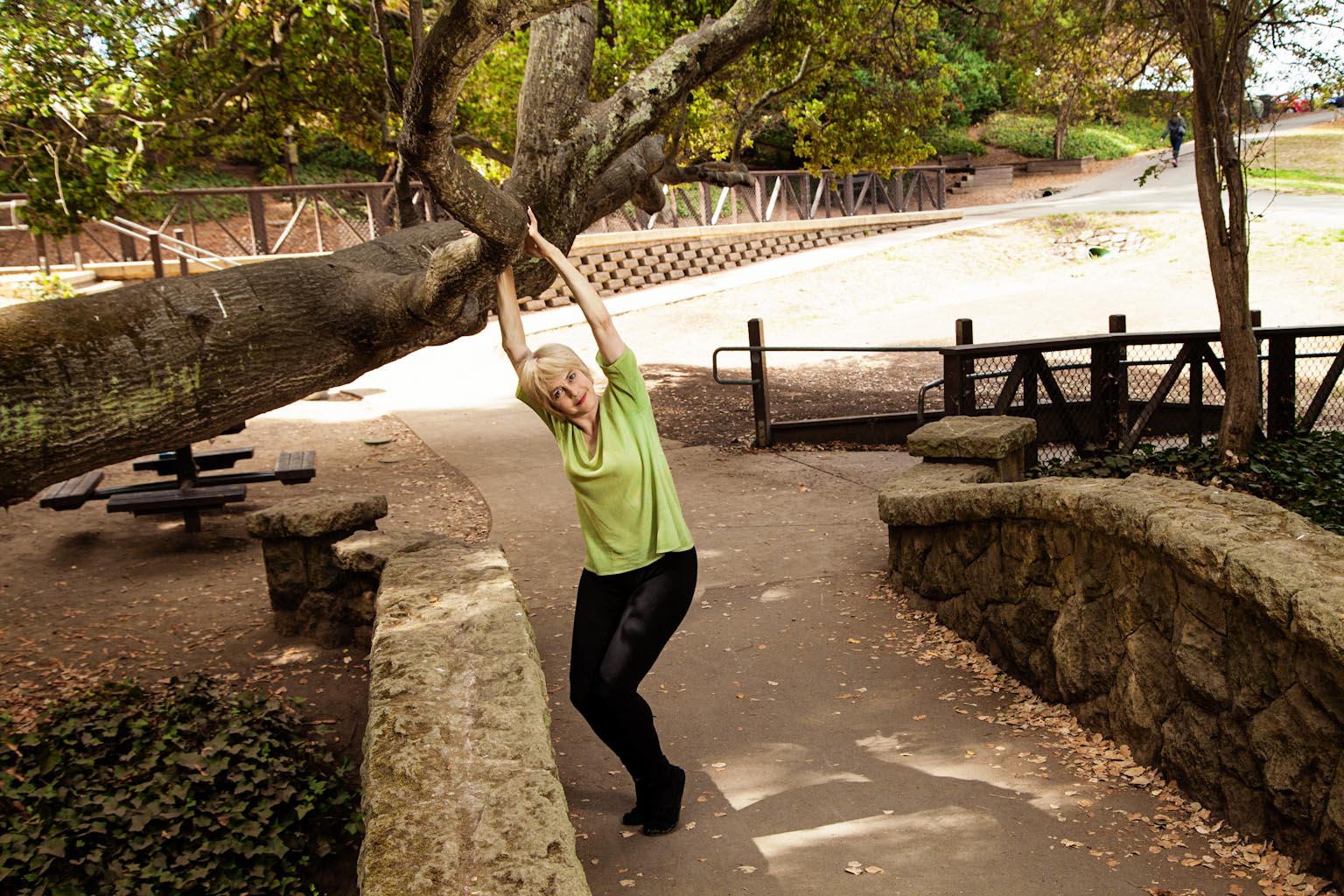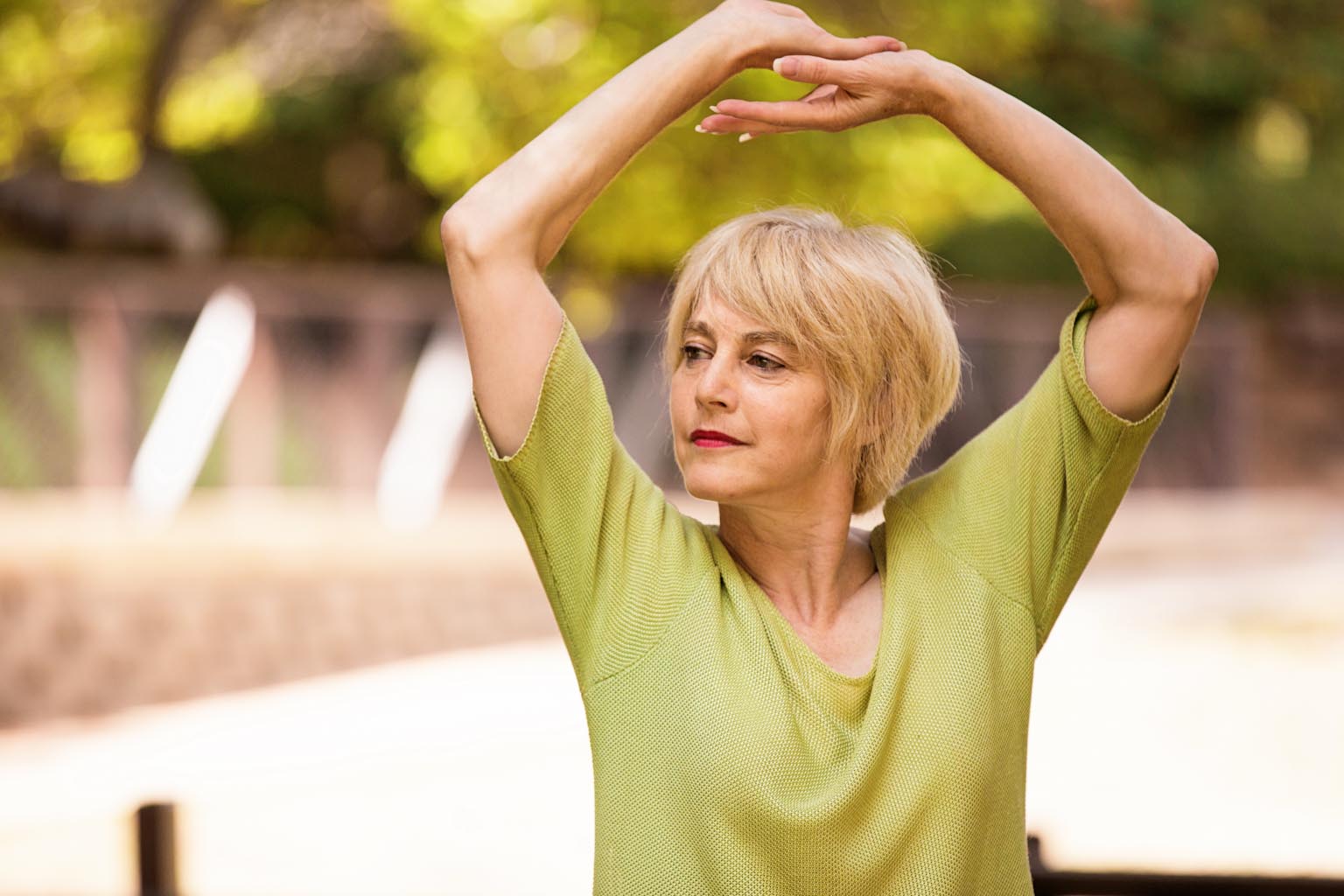Limitless in a Limited World: An Interview with Kathryn Roszak
BY EMMALY WIEDERHOLT; PHOTOGRAPHS BY GREGORY BARTNING
Kathryn’s staunch opinions and forthright realism about the schema of women in the dance world were strong and well-founded. She spoke with authority. But when she danced, what began to surface was a beautiful contradiction: she sharply questioned dance, and yet continued to give herself to it. For Kathryn, being critical and generous went hand in hand.
This interview is from the book “Beauty is Experience: Dancing 50 and Beyond.” Click here to learn more about the book, or click here to order your own limited edition copy!
~~
When did you start dancing and what have been some highlights along the journey?
I started dancing when I was three. I lived in the Bay Area and my mother was a dance critic, so I was regularly going to the opera house and seeing legendary dancers and companies. I started training through the San Francisco Ballet School. My father was a writer and went to London for work, so I trained in London as well.
When I was older, I trained in New York at Balanchine’s School of American Ballet, but I ended up spending the majority of my career in the Bay Area dancing with the San Francisco Opera Ballet. The theater, drama and production aspects were always what appealed to me.
From an early age, I was interested in choreography, but was told I needed to work on technique and being in a straight line before I could choreograph. There were no opportunities to choreograph as part of my training. In my early 20s, I started to seek out those opportunities for myself, gathering fellow dancers and presenting small shows in art galleries.
I developed the practice of giving myself ballet class in my 40s and 50s. I did a number of residencies, including at the Djerassi Resident Artist Program. It was a two-month residency in a rural setting, and I had to give myself class and create work on myself. It was a real challenge; I learned to use myself as my own resource.
Later, I lived rurally in West Marin for two years by a little town called Marshall near Point Reyes National Seashore. I would walk down the road to the old post office and sweep out the crushed oyster shells before giving myself class. I had long periods on my own where I was giving myself class and working. It was rather intense. Eventually, I brought other dancers up to the space and choreographed on them, and we’d give shows and eat oysters. It was really great.
I’ve been able to dance longer because I had to build my own dance practice and invite the community to come. It made me able to weather challenging circumstances.
What does your current dance practice look like?
I seek out ballet class regularly. I always do the barre, but sometimes the center work is challenging for me now. I also teach, which keeps me in shape.
How has your motivation to dance evolved over time?
It’s hard – people don’t see the hours of work behind dance. If you’re a poet you can just sit under a tree and write, but to make a dance you have to organize dancers, book rehearsal and performance space. It takes me a year or more to make a piece, especially being a single parent.
Aligning my work with other powerful artists keeps me going. I need overarching themes; for me, motivation goes way beyond just getting into a studio regularly. The overarching themes guide me and help me rise to the occasion. Some of these themes include working with war veterans or penetrating the psyche of Emily Dickinson through dance.
Do you feel you’ve achieved some measure of success?
I’ve done as much as I possibly could with the cards I’ve been dealt. I don’t feel limited; I feel like I’m operating in a limited world. I feel successful but I don’t know if my success has been recognized. I think that’s true of many women. I have to fight to feel successful, because I know what I do is powerful and impacts people.
What do you perceive is your legacy?
Throughout my life, I’ve had a particular challenge: I was discouraged heavily from going into choreography and being a creative artist in the world of ballet. That has always been a glass ceiling. When I became a single parent, I felt the glass ceiling even more so.
As we speak, I’m gathering together a group of women to create a residency for women ballet choreographers at Djerassi. Women are not encouraged to be creative in ballet. Ballet is a female-dominated profession, but the men have the power. Choreographers and artistic directors are more commonly men and they’re further up the chain.
We hear about Misty Copeland becoming a principal dancer and other instances of minorities progressing in ballet. That wasn’t the case before. But in terms of women having real jobs in ballet after being in a company, it’s a really old paradigm. If you’re a beautiful ballerina, what are you supposed to do when you’re done dancing in a company? The opportunities to choreograph or lead just don’t exist, so I’m trying in my own way to change that.
It goes back to my daughter. When my daughter first showed interest in dance, I could not encourage her to go into the field, and I asked myself why. I had such ambivalent feelings because my life experience had taught me ballet was not a great field for women. It’s an environment permeated with sexism.
Is there a circumstance that would cause you to stop dancing?
I get mad at the dance world and want to walk away, but I can never stop being a dancer. Even if I couldn’t move, I would still be a dancer inside because I’ve spent my entire life doing this.
Some of the times I’ve been gladdest to be a dancer have been surprising. A dear friend of mine was dying, but I could simply hold his hand and feel a communication with him because of my dancer body and mind.
What advice would you give to a younger generation of dancers?
Use technology carefully. Don’t be distracted by all the new gadgets. Dance is ancient; there’s a truth in the body and in being human that machines can never outdo.
Any other thoughts?
I’m saddened how, in the ballet world, the trend is younger and younger. In my era, we had fantastic mature women dancers, but we don’t have those examples as much anymore. The era we’re in now is about how much, how fast, how far, how extreme, etcetera. It mirrors our fascination with technology and the idea that faster is better. We’re narrowing our vision of what dance is and who gets to do dance, and thus losing the richness of the fabric.
~~
Kathryn Roszak trained at the San Francisco Ballet and the School of American Ballet, and performed with the San Francisco Opera Ballet. Her company Danse Lumiere has collaborated with kabuki master Shozo Sato, choreographer Alonzo King, musicians Mazatl Galindo of Mexico and Ailu Gaup of Norway, composer Gordon Getty, writers Gary Snyder and Maxine Hong Kingston and Swedish Nobelist Tomas Tranströmer. Her choreography has been presented by Cal Performances, Scandinavia House, the 92nd Street Y, The Smithsonian Institute, Frank Lloyd Wright’s Taliesin West and the Copenhagen Cultural Festival.
This interview is from the book “Beauty is Experience: Dancing 50 and Beyond.” Click here to learn more about the book, or click here to order your own limited edition copy!



